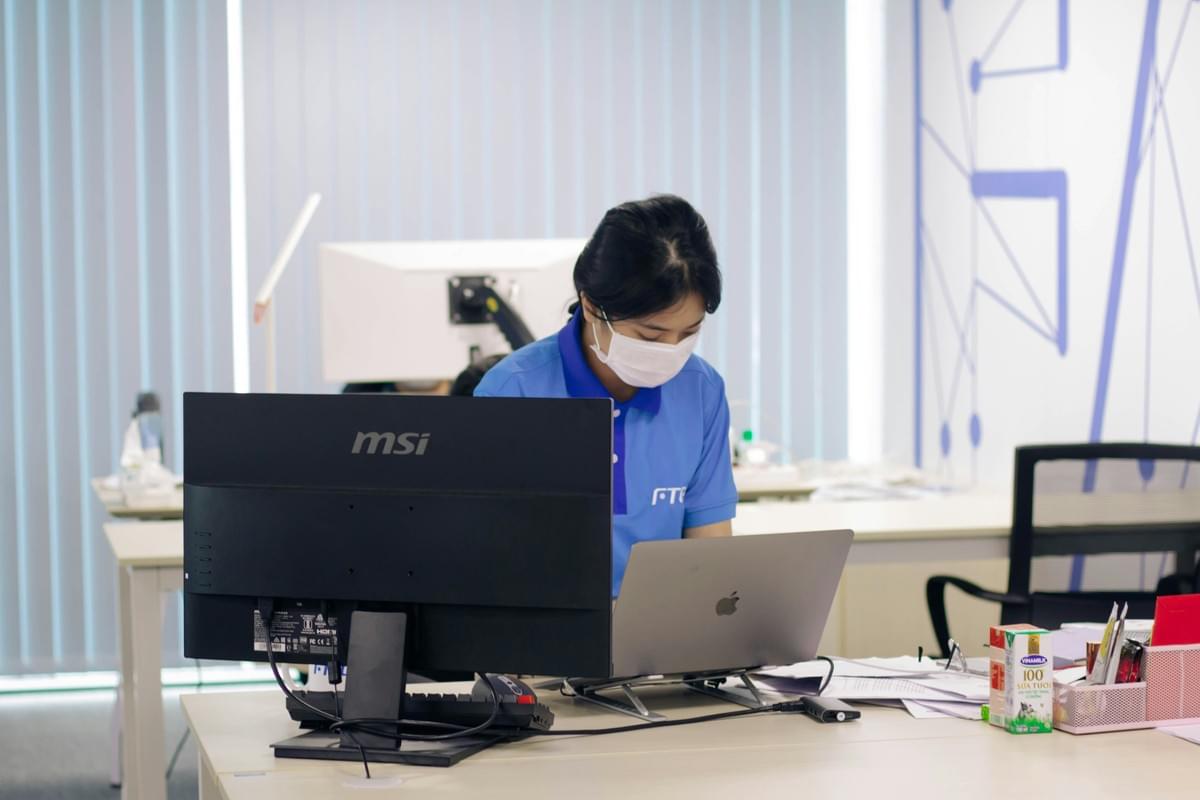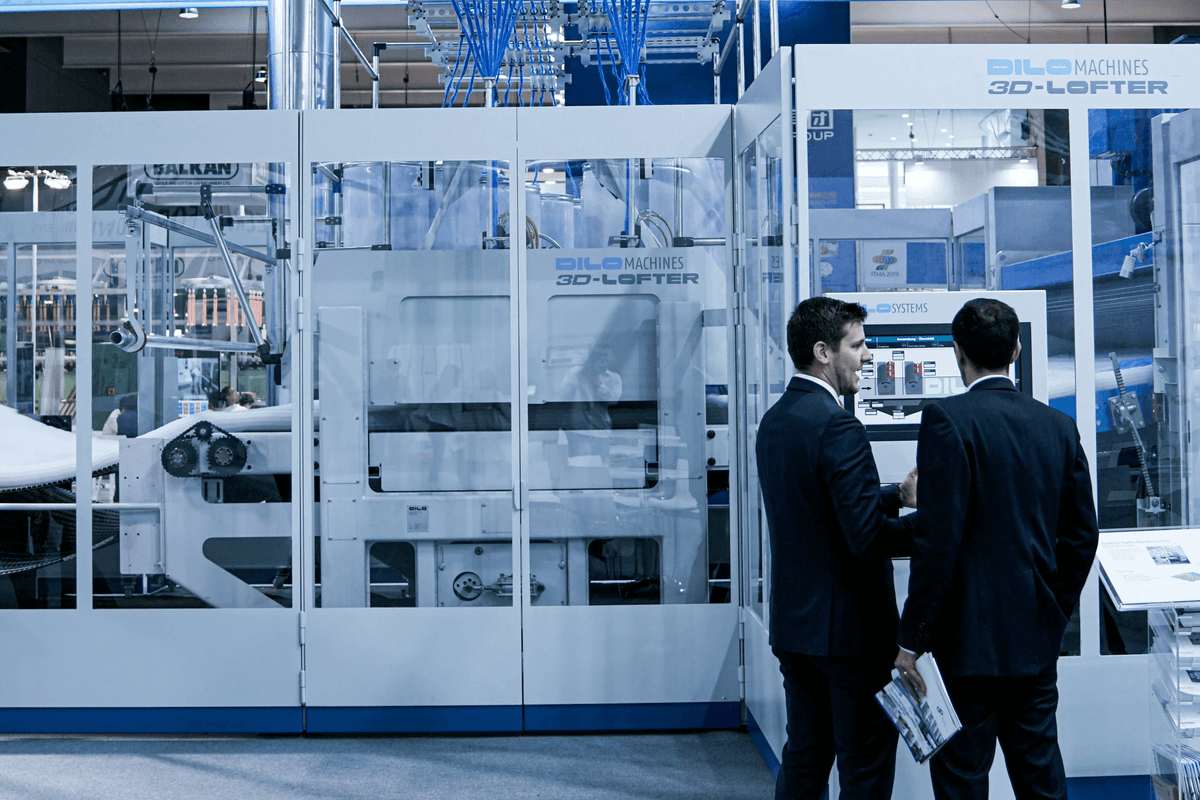Introduction
In the ever-evolving landscape of sustainability, brands are increasingly turning their attention to frameworks that enhance their commitment to responsible practices. Two prominent verification systems have emerged in this arena: SLCP (Social & Labor Convergence Program) and Higg FSLM (Facility Environmental Module). Understanding the nuances of SLCP vs Higg FSLM is crucial for companies aiming to demonstrate transparency and accountability in their operations.
Understanding SLCP and Higg FSLM
SLCP verification focuses on social and labor practices, providing a standardized approach for assessing working conditions across various industries. On the other hand, Higg FEM verification emphasizes environmental impacts, enabling manufacturers to evaluate their sustainability efforts comprehensively. Both frameworks play a pivotal role in guiding brands toward more ethical practices while fostering trust with consumers.
The Importance of Verification in Sustainability
Verification serves as a cornerstone of credibility in sustainability initiatives; it assures stakeholders that claims about social responsibility and environmental stewardship are backed by rigorous assessments. With increasing scrutiny from consumers and regulatory bodies alike, brands must prioritize robust verification processes like SLCP verification or Higg FEM verification to maintain their reputation. This commitment not only enhances brand loyalty but also aligns with global sustainability goals.
Navigating China Inspection Services
For companies operating within or sourcing from China, navigating the complexities of local inspection services is essential for ensuring compliance with both SLCP and Higg frameworks. A reliable China inspection company can provide invaluable support by conducting thorough evaluations that adhere to international standards while addressing local nuances. With professional services like those offered by China Inspection Pro, businesses can streamline their quality assurance processes, ensuring they meet market expectations without compromising on ethical standards.
Overview of SLCP

The Sustainable Apparel Coalition's Social and Labor Convergence Program (SLCP) is a transformative initiative aimed at standardizing social and labor assessments across the apparel industry. SLCP verification serves as a cornerstone for brands seeking to ensure ethical practices within their supply chains. By providing a unified framework, SLCP helps streamline processes, making it easier for brands to navigate compliance while maintaining transparency.
What is SLCP Verification
SLCP verification is a systematic process designed to evaluate social and labor practices in the apparel sector. It focuses on creating a common baseline for assessments, thus eliminating redundant audits that can burden manufacturers and suppliers alike. This streamlined approach not only enhances efficiency but also fosters greater trust among stakeholders, allowing for more meaningful engagement in sustainability efforts.
Benefits of SLCP for Brands
Brands that adopt SLCP verification enjoy numerous benefits, particularly in terms of reputation management and operational efficiency. By participating in this program, they demonstrate their commitment to ethical labor practices, which can enhance consumer trust and loyalty. Additionally, SLCP enables brands to reduce audit fatigue by consolidating multiple assessments into one, ultimately saving time and resources—an attractive proposition when considering the ongoing debate of SLCP vs Higg FSLM.
Role of China Inspection Company in SLCP
China inspection companies play an essential role in facilitating effective SLCP verification processes. They provide critical services such as on-site assessments and compliance checks that ensure adherence to the program's standards. With their expertise in navigating local regulations and industry requirements, these companies empower brands to achieve successful verification outcomes while maintaining high-quality production standards.
Exploring Higg FSLM

The Higg Facility Environmental Module (FEM) is a crucial component of the Higg Index, designed to assess the environmental performance of manufacturing facilities. It provides a standardized framework for manufacturers to evaluate and improve their sustainability practices while addressing various environmental impacts. As companies increasingly face pressure to demonstrate their commitment to sustainability, understanding Higg FEM verification becomes essential for maintaining competitive advantage.
What is Higg FEM Verification
Higg FEM verification is a process that allows manufacturers to evaluate their environmental performance across multiple dimensions, such as energy use, water consumption, waste management, and emissions reduction. By utilizing this framework, companies can identify areas for improvement and track their progress over time. This systematic approach not only fosters transparency but also facilitates meaningful dialogue with stakeholders about sustainability efforts.
The verification process involves self-assessment followed by third-party validation, ensuring that the data reported is accurate and reliable. This dual-layered approach helps in building trust among consumers and partners alike while differentiating brands in the crowded marketplace. In the context of SLCP vs Higg FSLM, understanding how these frameworks operate can empower brands to make informed decisions about which verification system best suits their needs.
Advantages of Higg FSLM for Manufacturers
Manufacturers stand to gain numerous advantages from adopting the Higg FSLM framework. Firstly, it allows them to benchmark their performance against industry standards and peers, fostering a culture of continuous improvement. By identifying inefficiencies or areas needing attention through rigorous assessment processes like Higg FEM verification, companies can implement targeted strategies that enhance operational efficiency.
Moreover, aligning with the Higg Index signals a commitment to sustainability that resonates with eco-conscious consumers and partners alike. This alignment can lead not only to improved brand reputation but also increased market share as more buyers prioritize sustainable practices in their purchasing decisions. In this landscape where SLCP vs Higg FSLM discussions are prevalent, choosing the right framework becomes paramount for manufacturers looking to thrive.
Importance of China Inspection Services in Higg
China inspection services play an indispensable role in facilitating effective implementation of the Higg Index within manufacturing facilities located in China or sourcing from there. These services ensure that manufacturers comply with local regulations while adhering to international standards set forth by frameworks like Higg FEM verification. Engaging a reputable china inspection company helps streamline processes by providing expert guidance on best practices tailored specifically for Chinese manufacturing contexts.
Furthermore, thorough inspections conducted by professionals can significantly enhance data accuracy during self-assessments required by the Higg Index framework. Reliable data serves as a foundation for successful third-party validation processes that bolster credibility within supply chains globally. With China Inspection Pro's expertise in navigating complex challenges related to quality assurance and compliance requirements, manufacturers can confidently pursue sustainable initiatives knowing they have professional support every step of the way.
Key Differences Between SLCP and Higg FSLM

When it comes to sustainability verification frameworks, understanding the differences between SLCP and Higg FSLM is crucial for brands and manufacturers alike. Both frameworks aim to enhance transparency and improve sustainability practices within supply chains, but they do so through distinct processes and focuses. This section will delve into the verification processes, scope, and stakeholder engagement of SLCP vs Higg FSLM.
Verification Processes Compared
The verification processes for SLCP verification and Higg FEM verification differ significantly in their approach. SLCP utilizes a standardized assessment methodology that allows brands to efficiently evaluate their suppliers' sustainability performance across multiple sectors. In contrast, Higg FSLM emphasizes a more detailed evaluation of specific manufacturing practices, requiring manufacturers to provide comprehensive data on various environmental impacts.
China inspection services play a vital role in both frameworks by ensuring that the verification processes are conducted accurately and impartially. A China inspection company can facilitate these assessments by providing local expertise and resources necessary for effective evaluations. Ultimately, understanding these differences empowers companies to choose the right framework based on their unique supply chain needs.
Scope and Focus Areas
When comparing the scope of SLCP vs Higg FSLM, it becomes evident that each framework has its own focus areas tailored to different stakeholders in the supply chain ecosystem. SLCP primarily targets social labor conditions within production environments, offering insights into worker welfare and rights while ensuring compliance with ethical standards. On the other hand, Higg FSLM dives deeper into environmental aspects related to manufacturing practices—addressing resource consumption, waste management, and overall ecological footprints.
This distinction highlights how brands can leverage either framework based on their sustainability goals; those prioritizing social responsibility might lean towards SLCP verification while manufacturers focused on environmental impact could opt for Higg FEM verification instead. Furthermore, China inspection services can assist in navigating these specific scopes effectively by providing specialized assessments tailored to each framework's requirements.
Stakeholder Engagement and Transparency
Stakeholder engagement is another critical area where SLCP vs Higg FSLM diverges significantly in their methodologies. The SLCP model promotes collaborative efforts among various stakeholders—including brands, suppliers, NGOs, and workers—fostering an environment of shared accountability for sustainable practices throughout the supply chain. This collaborative approach enhances transparency as all parties work together towards common goals.
In contrast, Higg FSLM emphasizes data-driven insights from manufacturers directly while engaging with external stakeholders like consumers seeking information about product sustainability claims. By utilizing detailed metrics from China inspection services during this process, manufacturers can ensure accurate reporting that resonates with consumer expectations around transparency in sustainable practices. Ultimately, both frameworks encourage stakeholder involvement but do so through different mechanisms tailored to their respective focuses.
Real-World Applications and Case Studies
In the realm of sustainability, real-world applications of SLCP and Higg FSLM provide valuable insights into their effectiveness. By examining success stories and case studies, we can better understand how these frameworks are implemented and the role China Inspection Services play in ensuring compliance and quality. Let’s dive into some notable examples to illustrate the impact of SLCP verification and Higg FEM verification.
SLCP Success Stories
Numerous brands have successfully adopted SLCP verification, showcasing its benefits in promoting sustainable practices. One notable success story involves a well-known apparel brand that leveraged SLCP to enhance its supply chain transparency. By collaborating with a reputable China inspection company, they were able to streamline their verification processes, reduce environmental impact, and improve labor conditions across their factories.
Another example is a footwear manufacturer that utilized SLCP verification to engage stakeholders more effectively. With the help of China inspection services, they identified key areas for improvement within their operations, leading to enhanced worker satisfaction and increased productivity. These real-life applications underline the significance of SLCP in fostering responsible business practices while addressing pressing sustainability challenges.
Higg FSLM in Action
Higg FSLM has also made waves within various manufacturing sectors by providing manufacturers with a comprehensive framework for measuring sustainability performance. A prime example is an electronics manufacturer that implemented Higg FEM verification to assess its environmental impacts systematically. This approach not only helped them identify inefficiencies but also led to substantial cost savings through energy conservation measures.
Additionally, a textile company utilized Higg FSLM to benchmark its sustainability efforts against industry standards effectively. With insights from China Inspection Service professionals, they were able to optimize their resource usage while enhancing product quality—demonstrating how Higg FSLM can drive tangible results for manufacturers committed to sustainable practices. These examples highlight how adopting Higg FEM verification can lead businesses toward more responsible production methods.
Insights from China Inspection Service
China Inspection Services play an integral role in both SLCP vs Higg FSLM implementations by providing thorough assessments and guidance throughout the verification process. Their expertise ensures that brands not only comply with necessary regulations but also achieve meaningful improvements in sustainability performance metrics. By partnering with a trusted china inspection company like China Inspection Pro, organizations can navigate complex challenges while maintaining high-quality standards.
Moreover, these services offer actionable recommendations based on rigorous evaluations of operational practices within factories or supply chains. This level of insight empowers businesses to make informed decisions that align with their sustainability goals while enhancing overall product excellence—an essential factor when considering SLCP verification or Higg FEM verification strategies.
Choosing the Right Framework for Your Needs

When navigating the landscape of sustainability verification, selecting the right framework is crucial for your organization’s success. The decision often boils down to understanding SLCP vs Higg FSLM and how each aligns with your operational goals. Both frameworks offer unique advantages, but knowing which one fits your needs requires careful consideration.
Factors to Consider
Several factors should guide your choice between SLCP verification and Higg FEM verification. First, evaluate your supply chain's complexity and the specific sustainability challenges you face; this will help you determine which framework provides a more tailored approach. Additionally, consider the resources available for compliance, including time, budget, and expertise within your team or through a reliable china inspection company.
The geographical focus of your operations also plays a significant role in this decision-making process. If you're heavily engaged in the Chinese market, leveraging china inspection services can enhance both SLCP verification and Higg FEM verification efforts by ensuring local regulations are met while maintaining global standards. Ultimately, aligning these factors with stakeholder expectations will set a solid foundation for sustainable practices.
Aligning with Business Goals
Your choice between SLCP vs Higg FSLM should align seamlessly with broader business objectives such as improving brand reputation or meeting regulatory requirements. For instance, if transparency in supply chain practices is paramount for your brand image, opting for Higg FEM verification may be more beneficial due to its emphasis on stakeholder engagement and data sharing. On the other hand, if cost-effectiveness and streamlined processes are priorities, then SLCP verification could be advantageous.
Moreover, think about how each framework supports long-term growth strategies; engaging with a china inspection service can provide insights that help enhance operational efficiency while ensuring compliance with both local and international standards. By taking these elements into account when choosing a framework, you can better position your organization for sustained success in sustainability initiatives.
How China Inspection Pro Can Assist
Navigating through SLCP vs Higg FSLM can be complex; however, China Inspection Pro is here to simplify that journey. Our team specializes in providing comprehensive china inspection services tailored to meet the unique demands of both frameworks—ensuring that you achieve optimal results without unnecessary headaches along the way. With our expertise in quality inspection processes backed by advanced methodologies, we can guide you through every step of implementing either SLCP verification or Higg FEM verification.
We understand that making informed decisions requires access to actionable insights; thus we rigorously examine every detail of your operations to ensure they meet industry standards while also aligning with best practices in sustainability reporting. By partnering with China Inspection Pro, you'll not only streamline compliance but also elevate overall product quality—turning challenges into opportunities for growth.
Conclusion
In the ever-evolving landscape of sustainability, understanding frameworks like SLCP and Higg FSLM is crucial for brands and manufacturers alike. Both SLCP verification and Higg FEM verification serve as critical tools to validate sustainable practices within supply chains, yet they cater to different needs and objectives. By navigating these frameworks effectively, companies can enhance their credibility and commitment to sustainability.
Recap of SLCP and Higg FSLM
SLCP (Social & Labor Convergence Program) focuses on verifying social compliance in labor practices, while Higg FSLM (Facility Environmental Module) emphasizes environmental performance in manufacturing processes. Each framework offers distinct advantages; SLCP verification streamlines assessments across multiple stakeholders, whereas Higg FEM verification provides manufacturers with insights into their environmental impact. Understanding the nuances between SLCP vs Higg FSLM is essential for companies aiming to align their operations with industry standards.
Importance of Choosing the Right Verification
Selecting the appropriate verification framework can significantly influence a company’s sustainability strategy and overall success. Brands must consider factors such as industry requirements, stakeholder expectations, and specific operational goals when deciding between SLCP verification and Higg FEM verification. The right choice not only enhances transparency but also fosters trust among consumers, partners, and regulatory bodies.
Leveraging China Inspection Services for Success
Engaging a reputable China inspection company can further amplify the benefits of both SLCP and Higg FSLM frameworks. China Inspection Services offer comprehensive support in navigating complex regulatory environments while ensuring compliance with industry standards through rigorous evaluations. With partners like China Inspection Pro at your side, you gain access to expert insights that transform findings into actionable strategies—ultimately driving product excellence in line with market demands.
